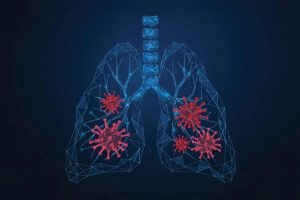
Artificial intelligence can spot COVID-19 in lung ultrasound images much like facial recognition software can spot a face in a crowd, new research shows.
The findings boost AI-driven medical diagnostics and bring health care professionals closer to being able to quickly diagnose patients with COVID-19 and other pulmonary diseases with algorithms that comb through ultrasound images to identify signs of disease.
“Detection of COVID-19 features in lung ultrasound images using deep neural networks,” newly published in Communications Medicine, is the culmination of an effort that started early in the pandemic when clinicians needed tools to rapidly assess legions of patients in overwhelmed emergency rooms.
“We developed this automated detection tool to help doctors in emergency settings with high caseloads of patients who need to be diagnosed quickly and accurately, such as in the earlier stages of the pandemic,” said senior author Muyinatu Bell, an associate professor in the Department of Electrical and Computer Engineering in the Whiting School of Engineering at Johns Hopkins University. “Potentially, we want to have wireless devices that patients can use at home to monitor progression of COVID-19, too.”
Read the full story on The Hub.